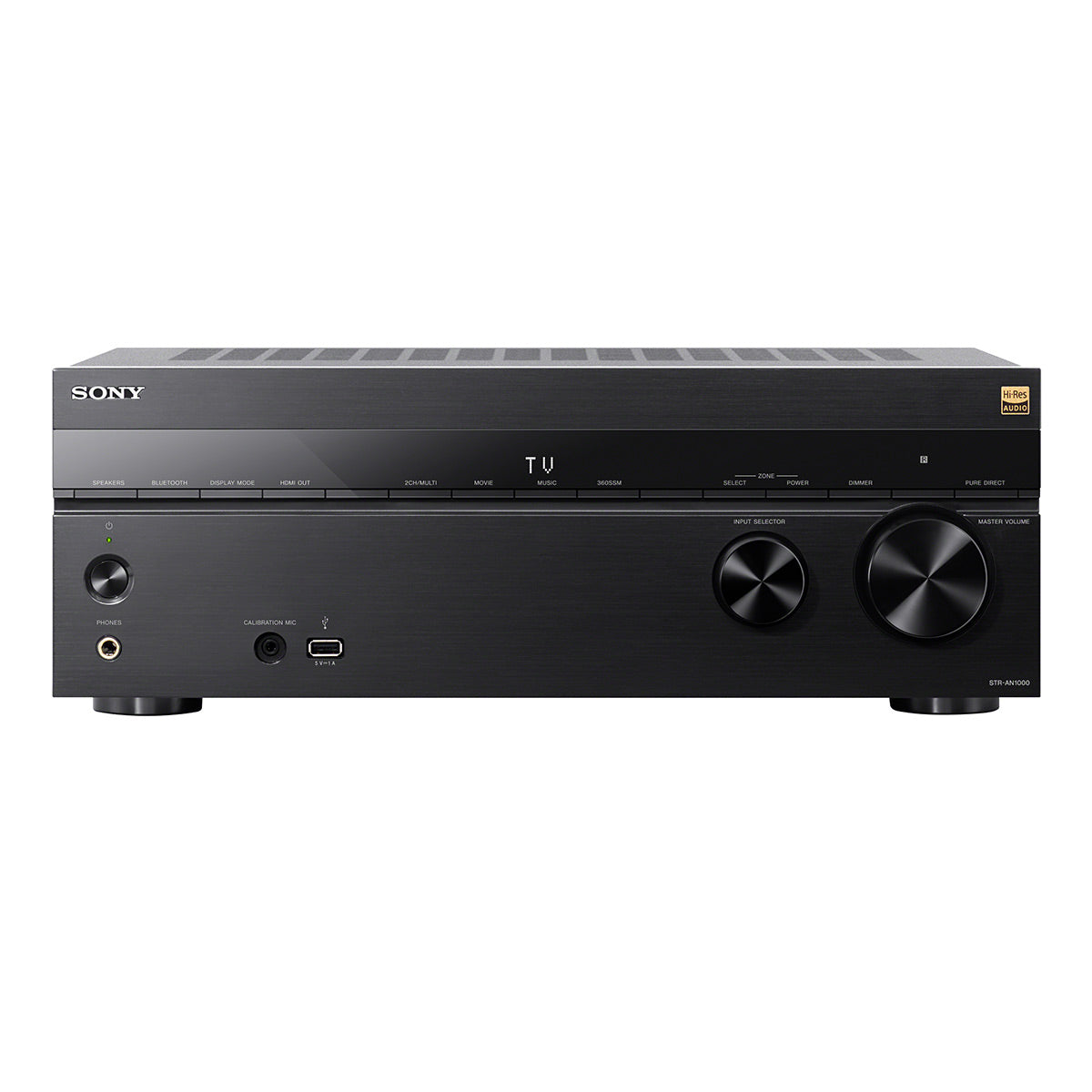People get confused by this all the time.
The back panel wattage number on the AVR is a regulatory number related to heat dissipation, especially with respect to the power cord. In other words, over a fairly long period of time (think minutes, not fractions of a second) the AVR will pull no more than an average of 2 amps from a 120VAC feed. Amperage and the cord resistance determine heat generation and are factors in cord selection (do not worry about this, you will not improve on Sony's cord.) Basically, the 240W number is Sony saying "This receiver won't make more than this heat so with the parts inside and the cord, it will not catch fire." For technical reasons any power you measure at the wall is going to be relatively meaningless to what's going to the speakers (I'll get to this.)
The speaker wattage rating is based on two different things:
1) Speaker moving parts have a physical maximum distance they can travel, known as Xmax. If they move further than this they may damage the motors or audibly bang parts against each other that aren't supposed to touch. This applies to all the drivers but generally speaking is only a concern with the woofer, and is generally limiting at very low frequencies, especially for ported speakers; in fact, the actual power ratings can be a lot lower than listed at extremely low frequencies.
Displacement is a factor of voltage, and ((voltage^2) / resistance) is wattage, but keep in mind resistance is really impedance, and impedance is a complex curve mainly dependent on frequency, so don't just plug in '6 ohms' and thing the math works. Xmax violations can damage your speaker if the power is excessive for even half a cycle (of the music frequency, not AC line frequency.) If your speaker makes weird, mechanical, bangy noises, you are cranking it too hard.
2) Speaker motors also have resistance and current passing through them also generates heat. Just like the AVR, the speaker parts have to be able to dissipate that heat faster than it generates. This is generally most limiting with tweeters (because they're smaller) but that's ok because there's generally a lot less power in the high frequency signal. Like the AVR, heat damage occurs over time, often the best indicator something is damaged is your speaker will smell bad.
Now, going back to the AVR:
Speaker amplifiers output ratings are determined pretty loosely. You can see from Amir's reviews how these numbers are ideally calculated. But with multichannel amplifiers (like AVRs) it is common that the, uh, common power supply doesn't have the capability to drive all the integrated amps to rated load. Thus, it is possible that your amp can drive the two main speakers to 100 watts per channel, but in 7-channel mode it may only be able to push 30wpc to each. Even then, it's more complicated than that.
Rolling this together:
When you play music, the output signal goes up and down in power as it goes up and down in voltage, into the impedance presented by the speakers at the frequencies of the music's AC signal, with the amplifier supplying the current needed to maintain that voltage (unless you're trying to get too loud and it runs out of current and clips.) It is extremely unlikely that power over time is anything like the maximum (i.e. 100 watts) per channel, because that's not how music works, you have quiet parts, even between notes, that pull the average down. For this reason (and not talking about the bass) speaker wattage ratings tend to be almost meaningless. If it sounds bad, turn it down, and don't use your speakers for drunken block parties. If your speakers say '100 watts max' and your reciever says '100 watts max' you should be OK. On the bass end, the numbers are unfortunately also fairly meaningless as you can easily damage your speakers with a lot less than 100w if you were, say, passing subsonic test tones to them. Don't do this. This is why people who want to go loud in the deep bass use subwoofers.
Now, why does the AVR back panel say 240w when Sony says it can deliver so much more across the output channels?
This again is scored loosely but music has a duty cycle. Again, there are 'loud parts' and 'quiet parts' even in the middle of loud songs. Plus, sober AVR owners generally don't slam their volume to the right and blast all night. So a consumer AVR may be designed with the assumption that the amplifiers are only hitting max voltage out, say, 8% of the time or less. This would be a 12% duty cycle. The AVR's 60hz AC power supply will average out that power draw over time, and if you have an AC power meter, it's also integrating over time. There are inefficiencies in the amp, AVR circuitry, power supply etc, let's say 50%, so you could be sending 100w peaks to two stereo speakers, but see <1 amp draw from the wall outlet. It's also how a 240 watt AVR can claim to put out 1100 watts or more, and is technically telling the truth, it just can't do it for more than a few cycles. This is also how you can send '100 watts' to '80 watt' speakers and they don't burst into flames.
So as the other posters said, you are fine, if it sounds wrong or smells bad, turn it down.


www.worldwidestereo.com



